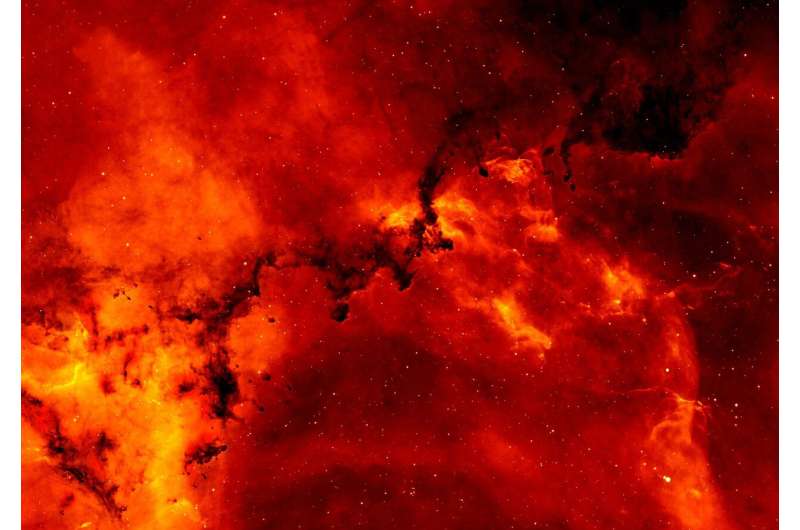Researchers study the turbulence raging inside distant stars

Stunning new images created by Keele researchers highlight the turbulent flow of energy inside distant stars.
They were created using the 3D simulation software "PROMPI", which scientists have been using to investigate stellar interiors with the aim of understanding the science of stellar evolution and black holes.
For years scientists have used one-dimensional models to explain and understand how stars are structured and how they evolve over time. But these models are often limited in how well they can explain the structure of stars, as they take a very general view of the entire star rather than offering any detailed analysis.
But new research led by Keele Ph.D. student Federico Rizzuti is helping to make these models more accurate, using 3D hydrodynamic simulations to look at the star's layers and chemical composition in much greater detail than has previously been possible.
Much like planets, stars have multiple layers, and for this study published in Monthly Notices of the Royal Astronomical Society, the researchers used existing data from previous 1D simulations and focused on a small section of the star in minute detail—in this case, a layer known as the neon-burning shell.
They conducted hydrodynamic simulations using the available data and looked at how fluids move about within the layer they are confined to, and how they drag along some material from the neighboring layers—a process known as entrainment, as well as how these chemicals move between the layer's borders, known as convective boundaries.
These simulations offer an unprecedented degree of realism in recreating the environment within a star, but more importantly, they also highlight the limitations of the current 1D models. These findings therefore have a huge role to play in helping us improve the accuracy of these models, which in turn will help us understand how astronomical phenomena are structured, such as black holes, supernovae, and neutron stars.
Lead author Federico Rizzuti says that "we live in exciting times, the computing resources to which we have access today make it possible to run simulations that were only a dream a few years ago. Understanding what is happening inside stars helps us to shed light on many aspects of the Universe we live in, from the dynamics of our Sun to the farthest black holes."
More information: F Rizzuti et al, Realistic 3D hydrodynamics simulations find significant turbulent entrainment in massive stars, Monthly Notices of the Royal Astronomical Society (2022). DOI: 10.1093/mnras/stac1981
Journal information: Monthly Notices of the Royal Astronomical Society
Provided by Keele University




















